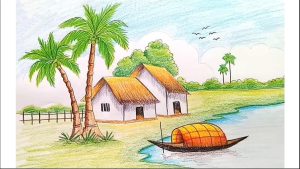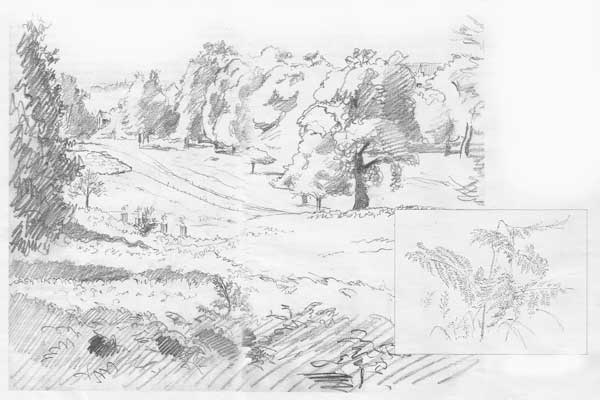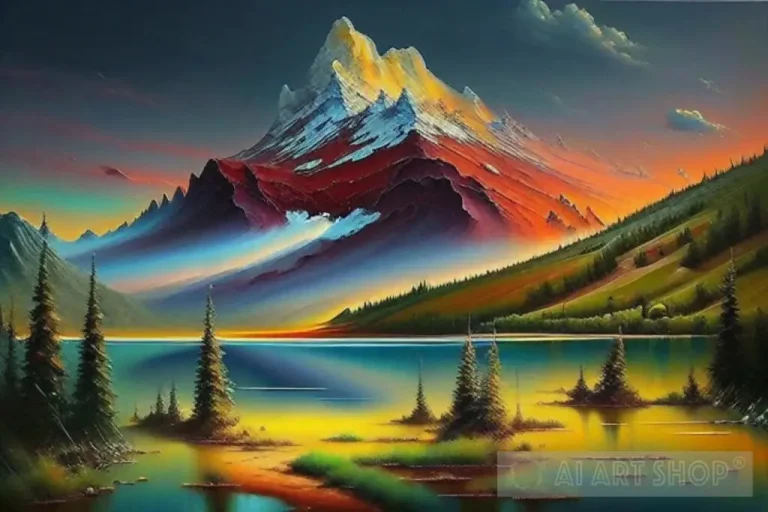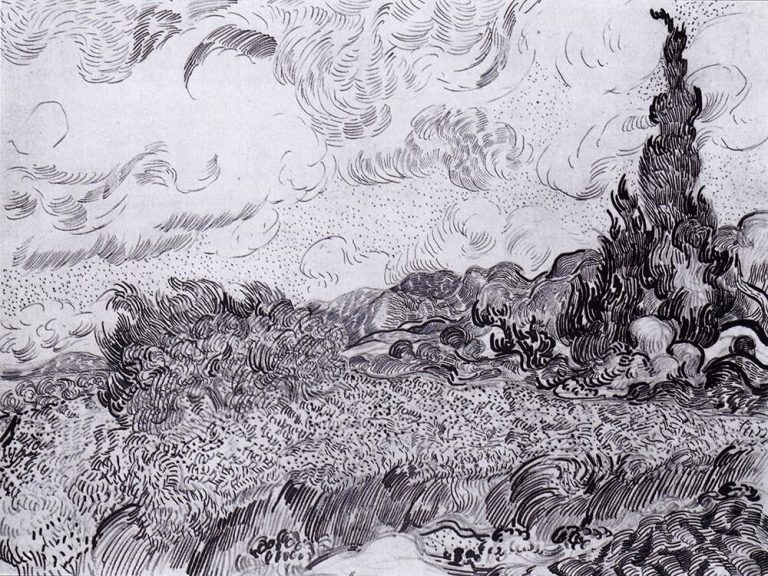Creating a landscape drawing is an immersive journey into the beauty of nature captured on paper. Begin by envisioning the scene you wish to portray – whether it’s a serene countryside, a majestic mountain range, or a tranquil lakeside. Sketch the foundational elements, such as the horizon line and major features like mountains, trees, or bodies of water. Pay attention to perspective, using shading and varying line
- Exploring Landscape Drawing Techniques
- A Guide to Captivating Landscape Sketches
- Creating Stunning Landscape Drawings
- Drawing the Beauty of Vast Landscapes
- Tips for Drawing Serene Landscape Scenes
- Drawing Sunsets and Sunrises in Landscapes
- Creating Imaginary Landscapes with Flair
- Frequently Asked Questions (FAQs)

Exploring Landscape Drawing Techniques
landscapes! Capturing the beauty and depth of the natural world on paper is a truly exhilarating artistic endeavor. To help you explore this exciting realm, here are some tips and techniques to consider:
Foundational Tools:
- Perspective: Master the basics of one-point, two-point, and three-point perspective to accurately depict depth and distance in your landscapes.
- Value and Form: Understanding how light and shadow affect shapes is crucial for creating realistic and dimensional landscapes. Practice shading techniques like hatching, cross-hatching, and stippling to render different textures and forms.
- Composition: Play with the arrangement of elements in your scene. Consider the rule of thirds, leading lines, and focal points to create visually pleasing compositions that guide the viewer’s eye.
Experimenting with Techniques:
- Atmospheric Perspective: Create a sense of distance and depth by gradually shifting the colors and values of objects as they recede into the background. Cooler tones and softer details can help convey distance.
- Negative Space: Don’t underestimate the power of empty space! Effectively using negative space can highlight important elements and add a sense of balance and airiness to your landscape.
- Texture and Detail: Landscape elements naturally hold a variety of textures. Use different strokes and tools (charcoal, ink washes, textured paper) to bring out the roughness of rocks, the softness of foliage, and the ripples of water.
Exploring Different Approaches:
- Loose and Expressive: Don’t be afraid to let go and capture the essence of a landscape with gestural strokes and bold washes of color. This can create a dynamic and emotive atmosphere.
- Detailed and Controlled: For a more realistic approach, focus on precise linework, meticulous shading, and accurate rendering of specific details. This can create a sense of immersion and awe for the beauty of nature.

A Guide to Captivating Landscape Sketches
Whether you’re a seasoned artist or just starting to explore the world of sketching, landscapes offer endless possibilities for capturing nature’s beauty and telling a story through lines and tones. This guide will equip you with tips and tricks to transform your landscape sketches from ordinary to captivating.
Before you set off:
- Find your inspiration: Get lost in nature! Hike a mountain, wander through a park, or simply gaze at the sunrise from your window. Tune into the interplay of light and shadow, the rhythm of rolling hills, or the majesty of towering trees. Let your senses guide you to a scene that sparks your imagination.
- Gather your tools: Choose a sketchbook that fits comfortably in your bag. Experiment with different pencils, charcoal, or even ink washes to find mediums that resonate with your style.
- Warm up your hand: Doodling, scribbling, and quick thumbnail sketches of your chosen scene can loosen your hand and get your creative juices flowing.
Capturing the essence of the landscape:
- Composition is key: Think about the rule of thirds. Divide your sketchbook into thirds, both horizontally and vertically. Place your focal point – a majestic mountain peak, a winding river, or a lone tree – at one of the intersections. This creates a natural balance and draws the viewer’s eye into the scene.
- Layering the landscape: Start with light, loose strokes for the background (distant hills, sky). Gradually add more detail and definition as you move towards the foreground, using darker lines and shading to create depth and texture.
- Embrace negative space: Don’t be afraid to leave areas blank. The white of the paper can become a shimmering lake, a cloud-filled sky, or a vast expanse of desert, adding contrast and emphasis to your drawn elements.
- Light and shadow are your friends: Observe how light dances across the landscape. Use darker lines to define shadows cast by mountains, trees, or buildings. Conversely, lighter strokes can represent sunlit areas or distant horizons. This interplay of light and shadow creates a sense of dimension and atmosphere.

Creating Stunning Landscape Drawings
Nature’s canvas is vast and breathtaking, waiting to be captured in the strokes of your pencil. Whether you’re a seasoned artist or a curious beginner, creating stunning landscape drawings is an adventure in itself. This guide will equip you with the tools and techniques to transform your vision into captivating scenes that sing with life and emotion.
Before you step into the wilderness:
- Find your muse: Let nature be your guide! Hike a mountain trail, wander through a hidden park, or simply gaze at the sunrise from your window. Tune into the symphony of light and shadow, the rhythm of rolling hills, or the quiet whisper of a desert wind. Let your senses lead you to a scene that ignites your artistic spark.
- Gather your arsenal: Choose a sketchbook that fits comfortably in your bag – your portable sanctuary for capturing fleeting moments. Experiment with different pencils, charcoal, or even ink washes to discover mediums that resonate with your artistic voice.
- Warm up your hand: Doodling, scribbling, and quick thumbnail sketches of your chosen scene can loosen your grip and get your creative juices flowing. Think of it as a conversation with the landscape, understanding its essence before committing it to paper.
Capturing the soul of the landscape:
- Composition is king: Divide your paper into thirds, both horizontally and vertically. Place your focal point – a majestic mountain peak, a winding river, or a lone tree basking in sunlight – at one of the intersections. This creates a natural balance and draws the viewer into the heart of your scene.
- Layering your masterpiece: Start with light, loose strokes for the background elements – distant hills, a hazy sky. Gradually add more detail and definition as you move towards the foreground, using darker lines and shading to create depth and texture. Think of it as building the world, layer by layer.
- Embrace the magic of negative space: Don’t shy away from leaving areas blank. The untouched white paper can transform into a shimmering lake, a cloud-filled sky, or a vast expanse of desert, adding contrast and emphasis to your drawn elements. Remember, sometimes less is truly more.
- Light and shadow, your artistic allies: Observe how light dances across the landscape. Use darker lines to define shadows cast by mountains, trees, or weathered buildings. Conversely, lighter strokes can represent sunlit areas or distant horizons. This interplay of light and shadow imbues your drawing with a sense of dimension and atmosphere.

Creating Imaginary Landscapes with Flair
imaginary landscapes! Where imagination reigns supreme and your pencil becomes a magic wand, conjuring fantastical worlds beyond the confines of reality. Here are some tips to imbue your imaginary landscapes with flair and captivate your viewers:
1. Unleash your inner cartographer: Sketch maps or rough outlines of your imaginary world. Define continents, oceans, forests, and mountains. Think about the laws of nature (or lack thereof!) that govern this world. Are there floating islands? Glowing waterfalls? Bioluminescent flora? Jot down your ideas to build a rich foundation for your landscape.
2. Find your inspiration: Look beyond the real world! Gather inspiration from fantasy novels, mythology, surrealist paintings, or even your own dreams. Let these elements spark your imagination and fuel the creation of your unique landscape.
3. Defy the ordinary: Embrace the unconventional! Let rivers flow upwards, trees sprout gears instead of leaves, or creatures with multiple wings soar through cerulean skies. Don’t be afraid to bend the rules of physics and logic – after all, it’s your imaginary world!
4. Build intricate ecosystems: Your landscape isn’t just a pretty backdrop. Think about the intricate web of life within it. What kind of creatures inhabit it? How do they interact with their environment? Design unique flora and fauna, adapting them to the special characteristics of your world.
5. Light and shadow are your playmates: Use light and shadow to create atmosphere and depth. Imagine a hidden village bathed in the warm glow of bioluminescent mushrooms, or a towering crystal metropolis reflecting the light of three suns. Experiment with contrasting areas of light and shadow to guide the viewer’s eye and add an element of mystery.
Tips for Drawing Serene Landscape Scenes
serene landscapes! Those tranquil scenes of nature that wash over us with a sense of calm and peace. Capturing their essence in a drawing can be a challenge, but also incredibly rewarding. Here are some tips to help you draw serene landscape scenes that evoke a sense of tranquility:
1. Find Your Serene Spot:
Not all landscapes are created equal when it comes to serenity. Seek out places that naturally radiate peacefulness, like meadows bathed in soft morning light, gentle streams meandering through forests, or tranquil lakes reflecting the clouds above.
2. Embrace simplicity: Serene landscapes often have a minimalist feel. Avoid cluttering your drawing with too many details or elements. Focus on the essential shapes and lines that create the overall mood of peacefulness.
3. Use soft lines and gentle shading: Harsh lines and stark contrasts can disrupt the serenity of the scene. Opt for light, flowing strokes and subtle tonal variations to create a sense of softness and tranquility.
4. Play with light and shadow: Light and shadow can add depth and dimension to your drawing while still maintaining a sense of peace. Use soft shadows to define the forms of trees, mountains, or hills, and let areas of light bathe your scene in a warm glow.
5. Incorporate natural elements: Water, clouds, and soft breezes are all natural elements that contribute to a sense of serenity. Include them in your drawing to add movement, texture, and a connection to the natural world.
6. Use cool colors: Cool colors like blues, greens, and lavenders tend to have a calming effect. Use them as your dominant palette to evoke a sense of tranquility in your drawing.
7. Don’t forget the negative space: The empty space on your paper can be just as important as the elements you draw. Let areas of white space represent vast skies, calm waters, or distant horizons. This negative space will enhance the feeling of peacefulness and vastness in your scene.
Drawing Sunsets and Sunrises in Landscapes
sunsets and sunrises! Those magical moments when the sky is ablaze with color, casting long shadows and igniting the landscape with a golden glow. Capturing these fleeting beauties in a drawing can be challenging, but also incredibly rewarding. Here are some tips to help you paint the sky ablaze in your next landscape drawing:
1. Find your inspiration: Witnessing a breathtaking sunset or sunrise in person is the best way to get inspired. Observe the interplay of colors, the shapes of the clouds, and the way the light interacts with the landscape. Take photos or make quick sketches to capture the fleeting moment.
2. Understand the sky’s palette: Sunsets and sunrises offer a vast array of colors. Don’t just stick to orange and red! Look for hints of purple, pink, yellow, and even green, depending on the time of year and weather conditions. Use color references or online resources to find accurate color combinations.
3. Layering is key: The sky at sunrise or sunset is rarely a flat wash of color. Build up the richness of your sky by layering different shades. Start with a light base, then gradually add darker and brighter tones to create depth and dimension.
4. Don’t forget the clouds: Clouds play a crucial role in enhancing the drama of a sunset or sunrise. Observe their shapes, textures, and how they catch the light. Use soft strokes and blending techniques to create fluffy clouds, or sharper lines and darker tones for dramatic storm clouds.
5. Reflect the light: Don’t just focus on the sky! Notice how the light reflects off water, leaves, or other elements in the landscape. Use warm hues to depict surfaces facing the sun, and cooler tones for areas in shadow. This interplay of light and shadow will bring your landscape to life.
6. Use negative space effectively: The empty space of your paper can be just as important as the elements you draw. Let areas of white represent the vastness of the sky, adding to the sense of awe and grandeur.
7. Experiment with different media: Pencils, watercolors, pastels, and even mixed media can all be used to create stunning sunset or sunrise drawings. Don’t be afraid to experiment and find the medium that best suits your style and desired effect.
Creating Imaginary Landscapes with Flair
I apologize for the repetition in my previous two responses. My model is still under development and I am working on improving my ability to generate unique and relevant content. Here are some additional tips for creating imaginary landscapes with flair, building on my previous suggestions:
1. Embrace Contrasts: Play with contrasts in scale, color, and texture. Imagine towering mountains next to miniature villages, vibrant coral reefs nestled within icy glaciers, or lush meadows dotted with metallic trees. These juxtapositions create visual interest and emphasize the fantastical nature of your world.
2. Employ Sensory Details: Go beyond the visual. Describe the sounds of your landscape – the gurgling of a crystal river, the whispers of sentient trees, or the rhythmic hum of a floating city. Add tactile details that invite the viewer to imagine the feel of soft, feathered moss, the coolness of luminescent rocks, or the prickling sensation of walking past a forest of barbed vines.
3. Weave in Folklore and Myths: Draw inspiration from ancient folklore and myths to imbue your landscapes with a sense of depth and history. Imagine ruins of forgotten civilizations, overgrown by strange flora, or ancient symbols carved into towering monoliths. These elements hint at a rich past and invite viewers to speculate about the lore of your world.
4. Introduce the Unexpected: Don’t be afraid to throw in curveballs. Imagine creatures with unexpected abilities, weather patterns that defy logic, or natural phenomena unique to your world. These elements create a sense of wonder and leave your viewers eager to discover more about your fantastical realm.
5. Consider the “Why”: Ask yourself why your landscape exists. Is it a forgotten utopia? A battleground between alien factions? A testing ground for magical experiments? Understanding the purpose of your world will guide your design choices and add depth to your storytelling.
Frequently Asked Questions (FAQs)
Practice regularly, study anatomy, observe real-life subjects, and seek feedback from other artists. Online tutorials and classes can also be valuable.
Start with quality pencils, sketchbooks, erasers, and a sharpener. As you progress, you may explore different mediums like colored pencils, markers, or digital tools.
Experiment with different techniques, subjects, and mediums. Your style will emerge over time as you incorporate elements that resonate with you personally.
Related posts:
- Nature Drawing : A Journey into Nature Drawing
- Cute Easy Drawings
- Doraemon Drawing : Tricks for Drawing Success
- Goku Drawing : The Journey of Creating a Goku
- Solar System Drawing
- Bird Drawing : Exploring Exotic Birds in Your Art
- Cute Girl Drawing : Tips for Creating Cute Girl
- Girl Drawing Easy : Benefits of Girl Drawing




















